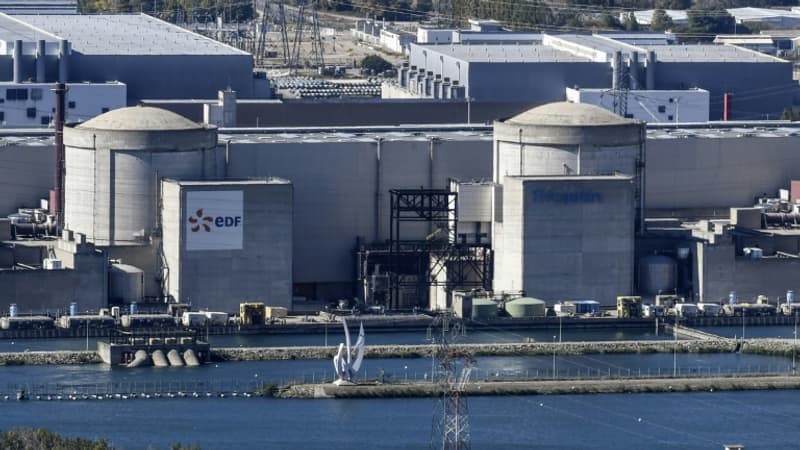End of procrastination. After years of postponement, Emmanuel Macron decided to relaunch the French nuclear industry by announcing at the beginning of the year the construction of 6 new EPR2 reactors (with a first start-up in 2035), as well as the launch of a study for eight additional reactors by 2050.
In order to carry out this mammoth project, the nuclear industry will have to take on a first major challenge: recruiting 10 to 15,000 people per year, including 3,000 in EDF, during the period 2023-2030, according to estimates by the energy company. . That’s at least 80,000 people.
If the need for labor in the third French industrial sector (220,000 jobs distributed in 3,000 companies today) is so considerable, it is because beyond the construction of the new EPRs that will mobilize 30,000 people, the maintenance and renovation of the Existing reactors as part of the major refurbishment will also require significant human resources. With heavy lifting ahead at a time when the unavailability of 24 out of 56 reactors, partly due to unprecedented corrosion problems, highlights the aging and fragility of the tricolor nuclear fleet.
“There is no other major industrial sector that will see so many cost increases in the coming years,” explained Alain Tranzer, EDF’s General Delegate for Industrial Quality and Nuclear Competencies.
MATCH program
After years of invisibility due to the lack of a clear strategy at the head of the State, the Group of French Nuclear Energy Industrialists (Gifen) welcomes the change of direction of Emmanuel Macron who, two years after the closure of Fessenheim, now wants to make the atom one of the pillars of the French energy mix, along with renewable energy.
“The nuclear industry will therefore have to recruit and this is excellent news. (…) First of all, to continue to maintain and operate the existing fleet, then to build new reactors. The outlook provided is very positive and mobilizing”. Olivier Bard, General Delegate for Gifen, rejoices.
Welder, engineer, boilermaker, control technician… To better refine the labor needs of the sector, Gifen is currently piloting the “MATCH” program that “will estimate the need for hiring in more than 80 trades.” This program, whose final results are expected in the first quarter of 2023, “intends to provide the sector with a true management tool to collectively have the necessary skills at the right time and deal with the project load plan ”, specifies Olivier Bard.
Communication campaigns
If the nuclear industry intends to hire en masse, it still needs to be able to rely on a pool of qualified candidates. However, in the absence of large projects for several years, skills in the nuclear industry tend to be lost. And when they exist for some applicants, they sometimes prefer to resort to other more attractive courses with a less tarnished image. As such, the MATCH program “will also allow a more specific view of trades in tension,” says Olivier Bard.
Representatives of the nuclear sector have already reinforced “general public communication campaigns and the reception of students at the sites, in internships, in study and work programs” to make themselves better known and strengthen their attractiveness, Olivier Bard details. “We need to rediscover our technical professions and their advantages in an industry that is fully in line with the great social challenges of the fight against climate change and sovereignty”, underlines the general delegate of Gifen. This also happens through social networks where the group publishes, among other content, video portraits of employees in the sector.
The professional federation is working in parallel on the development of its communication on nuclear training for students. “The priority issue is to guarantee a good knowledge of the professions and to make visible the offer of training courses that prepare for it. These training courses are already numerous”, recalls Olivier Bard, who also advocates “an ‘awareness’ of the professions nuclear”. “Since college and high school.” “It is important to encourage technical vocations and appropriate orientations from an early age,” he considers.
training in development
To better promote this training, various players in the sector have come together in 2021 to create the University of Nuclear Professions. Its role today is to provide better information on the various courses related to nuclear energy, to work on their content and to ensure that supply and demand match, especially in the regions.
Recently, the sector decided to launch new courses with the opening of a professional license and a master’s degree in radiation protection in Cherbourg (Manche). It is in this same city that the Higher School of Welding Training will soon see the light of day, at the initiative of EDF and Orano.
Starting next Thursday, the Emulation Dieppoise vocational secondary school in Dieppe (Seine-Maritime) will offer a new training course for nuclear valve mechanics, in collaboration with the National Education and the Normandy region. Graduates will then go directly to work at the neighboring EPR2 construction site in Penly, starting in 2027.
A renewed interest already visible?
According to Olivier Bard, the announcement of the construction of new reactors in the coming years has already aroused renewed interest in the nuclear sector, “especially in engineering courses.” “A titre d’exemple, the INSTN (Institut national des sciences et techniques nucléaires) who proposes a specialized diploma in automatic genes knowing an increase in the name of students in the master’s degree 70% in 5 years”, affirms-t -The.
Finally, he insists on the “crucial role” of companies “in the training of professionals in the sector”, recalling that “30% of continuous training is carried out internally, once the employees are in office”. In total, companies in the sector have launched more than 1,500 training courses, making it “one of the sectors that trains the most, with an average of 9 days of training per year”.
Source: BFM TV


